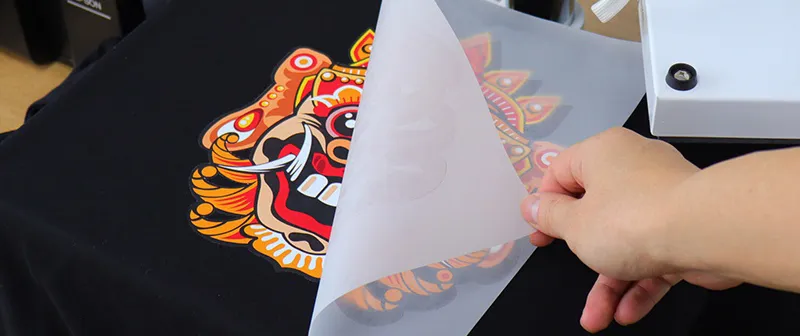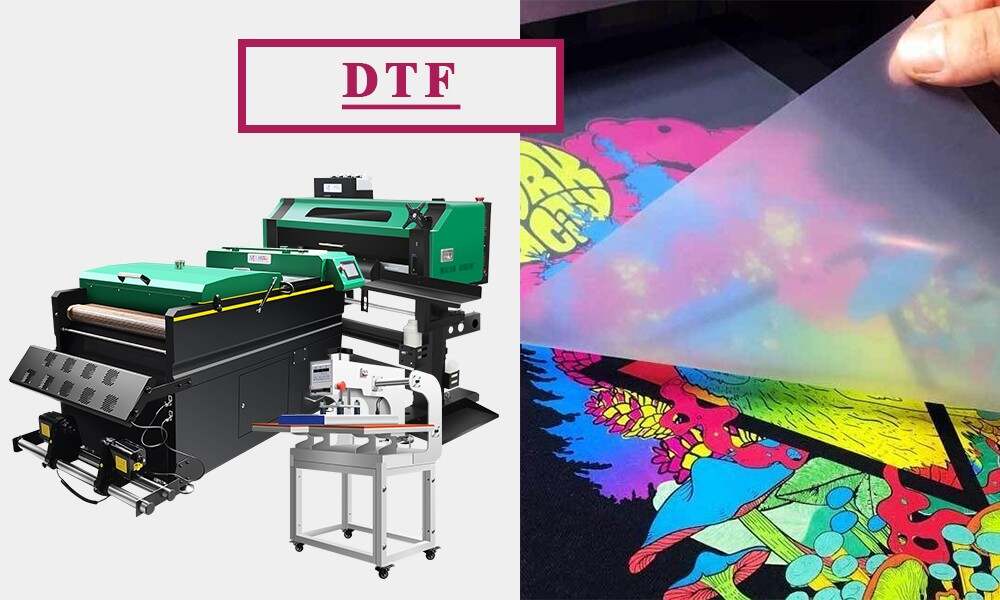Ultimate Overview to DTF Printing Techniques for Spectacular Fabric Layouts
Getting started on the trip of grasping DTF printing techniques can open up a globe of opportunities for creating aesthetically exciting textile layouts. In this guide, we will certainly explore the detailed details of DTF printing, from comprehending the essential basics to unraveling advanced color techniques that can boost your layouts to new elevations.
Recognizing DTF Printing Essentials
DTF printing, a process that includes transferring designs from an unique film to textiles making use of warm and pressure, forms the foundation of fabric printing methods. The first step in DTF printing entails creating or selecting a style that will certainly be published onto the fabric.
The final outcome is a stunning, lasting fabric design that is washable, adaptable, and resistant to fading. On the whole, understanding the essentials of DTF printing is important for mastering this modern textile printing strategy.
Selecting the Right Textile Materials
Having established the fundamental concepts of DTF printing strategies for textile layouts, the next essential consideration lies in picking the proper textile products to match this innovative process properly. The success of a DTF print greatly depends on the compatibility between the picked material and the printing strategy. When selecting fabric materials for DTF printing, it is vital to think about the fabric's make-up, weave, and appearance. Fabrics that function well with DTF printing consist of polyester blends, spandex, nylon, and various other artificial products. These fabrics normally have a smooth surface area that permits for thorough and vivid prints. Additionally, the stretchability of these products can accommodate the warmth transfer procedure associated with DTF printing without distorting the style. It is advisable to stay clear of natural fibers such as cotton or silk, as they may not generate the same degree of print clearness and durability. By picking the appropriate fabric products, developers can optimize the capacity of DTF printing to produce magnificent and resilient fabric layouts.

Understanding the Printing Process
To excel in DTF printing techniques for fabric styles, grasping the printing procedure is necessary for accomplishing consistent and high-grade results. The temperature level, pressure, and period of warmth application need to be very carefully controlled to make certain appropriate attachment of the layout to the fabric. By sharpening each of these actions in the printing process, designers can constantly create sensational and sturdy fabric styles with DTF printing strategies.
Enhancing Styles With Shade Methods

In addition, explore shade gradients can bring a sense of motion and fluidity to the design. By blending colors effortlessly, a slope impact can be attained, including a contemporary and vibrant touch to the fabric layout. Furthermore, utilizing shade obstructing strategies can develop strong and striking visuals by comparing various strong shades in distinctive sections of the style.
Furthermore, incorporating metal or neon shades can give a unique and appealing component to the textile design, making it stand apart and exhibit a feeling home of vibrancy. When tactically applied, these shade methods can raise the overall visual appeal of fabric styles, making them more captivating and unforgettable.
Troubleshooting Common DTF Printing Issues
After discovering numerous shade strategies to enhance textile designs, it is vital to attend to typical DTF printing issues that may arise throughout the manufacturing procedure. In addition, issues with image quality and intensity can happen due to low-resolution pictures or incorrect printing techniques. By being aware of these you can try these out common problems and implementing the required troubleshooting actions, you can boost the general high quality of your DTF printed textile designs.
Conclusion
To conclude, mastering DTF printing strategies is essential for developing sensational fabric styles. By comprehending the basics of DTF printing, picking the appropriate products, and boosting styles with color strategies, one can accomplish outstanding results. It is essential to troubleshoot usual problems that may emerge throughout the printing process to make certain an effective outcome. learn the facts here now With technique and interest to information, one can develop attractive and special fabric designs using DTF printing strategies.
DTF printing, a process that includes moving styles from an unique movie to fabrics using warm and stress, forms the foundation of fabric printing strategies.Having established the fundamental principles of DTF printing techniques for fabric styles, the following critical consideration exists in picking the suitable fabric materials to match this ingenious procedure effectively. By selecting the right fabric products, developers can make best use of the potential of DTF printing to produce magnificent and lasting fabric designs.
To excel in DTF printing strategies for fabric designs, mastering the printing process is vital for accomplishing high-grade and regular outcomes. DTF Printing. By honing each of these steps in the printing process, developers can consistently produce resilient and spectacular fabric layouts with DTF printing strategies
Comments on “A Deep Dive into DTF Printing: Methods, Benefits, and Industry Applications”